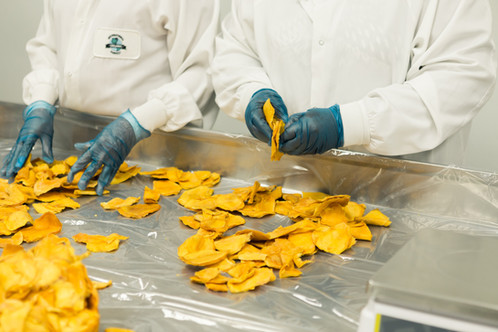NEW VERSION SQF 9.0
- Sergio Lopera

- Jun 30, 2021
- 3 min read
DETAILS OF THE MAIN CHANGES
Change 1: Food Safety Culture
2.1.1.2 Senior site management must lead and support a food safety culture within the site that ensures at a minimum:
The establishment, documentation and communication to all relevant personnel of the food safety objectives and performance measures;
Adequate resources are available to achieve food safety objectives;
iii. Food safety practices and all applicable SQF System requirements are adopted and maintained;
Employees are informed and responsible for their food safety and regulatory responsibilities;
Employees are positively encouraged and required to notify management of actual or potential food safety issues; Y
Employees have the power to act to resolve food safety issues within their scope of work.
GFSI Food Safety Culture Definition:
The definition of food safety culture according to GFSI is the shared values, beliefs and norms that affect mindset and behavior towards food safety in, through and throughout the organization.
Food safety culture elements are those elements of the food safety management system that a company's top management can use to drive the food safety culture within the company. These include, but are not limited to:
Communication on food safety policies and responsibilities
Training
Employee feedback on food safety issues
Performance measurement.
Focus on communication, training, behavior.
Change 2: Alternate SQF Practitioner
2.1.1.4 Senior site management should designate a lead and substitute SQF professional for each site with responsibility and authority to:
1. Supervise the development, implementation, review and maintenance of the SQF System;
2. Take appropriate measures to guarantee the integrity of the SQF System; Y
3. Communicate all essential information to relevant personnel to ensure the effective implementation and maintenance of the SQF System.
2.1.1.5 The Lead and Substitute SQF Physician shall:
1. Be an employee of the site;
2. Hold a position of responsibility related to the management of the site's SQF System;
3. Have completed a HACCP training course.
4. Be competent to implement and maintain HACCP-based food safety plans; Y
5. Know the SQF Food Safety Code: Food Manufacturing and the requirements to implement and maintain an SQF System relevant to the scope of the site's certification.
Greater orientation to prevention against contingencies, training and sustainability of the safety system.
Change 3: Corrective actions are now corrective and preventive actions
2.1.3.3 Corrective and preventive actions based on the severity of the incident and root cause analysis shall be implemented as described in 2.5.3. Records of customer complaints, their investigation and resolution will be kept.
Greater prevention and less focus on correction.
Change 4: The main deviation score point changes from -10 to -5
Based on the evidence collected by the SQF Food Safety Auditor, each applicable clause of the SQF Certification Food Safety Audit is automatically scored in the audit report.
The score is based on the following factors:
0 - appearance meets criteria
1 - appearance does not meet criteria due to minor variations (minor non-conformance)
5 - the aspect does not meet the criteria (major non-compliance)
50 - the aspect does not meet the criteria (critical non-compliance)
A single rating is calculated for your site audit as (100 - N) where N is the sum of the assigned individual rating criteria.
Beware: your site's SQF score will go up or down versus SQF.
Changes 5: Label reconciliation
2.6.1.2 Product start-up, product changeover, and packaging change procedures (including label changes) should be documented and implemented to ensure that the correct product is in the correct packaging and with the correct label and that the change is inspected and approved by an authorized person.
Procedures should be implemented to ensure that the use of the label is reconciled and any inconsistencies investigated and resolved.
Records of product change and label reconciliation will be kept.
The label reconciliation procedure, correct labeling and traceability is essential.
If you would like a refresher Echeck course on SQF 9.0 for your Operations staff focused on how to demonstrate compliance with the standard or an Internal Auditor Training course aimed at assessing compliance with the standard, please contact us.
Version:
Diego Jaramillo
CEO Echeck Company
@diegojaramillo
Source: SQFI página oficial









Comments